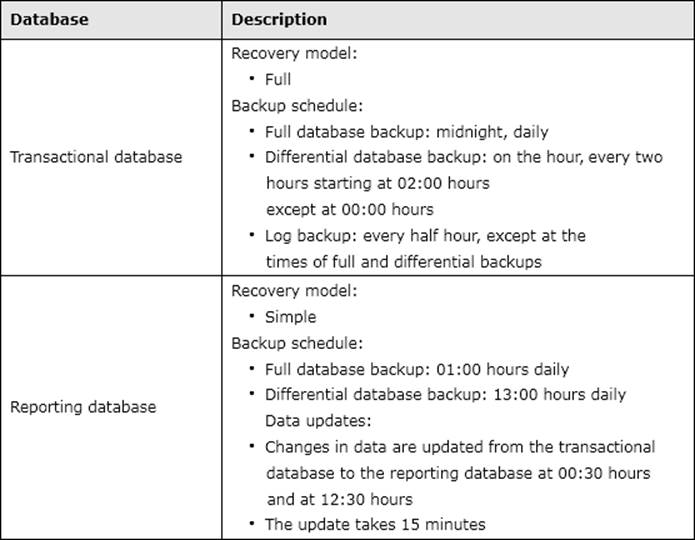You administer a Microsoft SQL Server 2012 server that hosts a transactional database and a reporting database. The transactional database is updated through a web application and is operational throughout the day. The reporting database is only updated from the transactional database.
The recovery model and backup schedule are configured as shown in the following table:

At 14:00 hours, you discover that pages 71, 520, and 713 on one of the database files are corrupted on the reporting database.
You also need to ensure that data loss is minimal.
What should you do?
A . Perform a partial restore.
B . Restore the latest full backup, and restore the latest differential backup. Then, restore each log backup taken before the time of failure from the most recent differential backup.
C . Restore the latest full backup.
D . Restore the latest full backup, and restore the latest differential backup. Then, restore the latest log backup.
E . Perform a page restore.
F . Restore the latest full backup. Then, restore each differential backup taken before the time of failure from the most recent full backup.
G . Perform a point-in-time restore.
H . Restore the latest full backup. Then, restore the latest differential backup.
Answer: H
Explanation:
Restores a file or filegroup in a multi-filegroup database. Note that under the simple recovery model, the file must belong to a read-only filegroup. After a full file restore, a differential file backup can be restored.
Page restore
Restores individual pages. Page restore is available only under the full and bulk-logged recovery models.
Piecemeal restore
Restores the database in stages, beginning with the primary filegroup and one or more secondary filegroups. A piecemeal restore begins with a RESTORE DATABASE using the PARTIAL option and specifying one or more secondary filegroups to be restored.
Latest 70-462 Dumps Valid Version with 301 Q&As
Latest And Valid Q&A | Instant Download | Once Fail, Full Refund